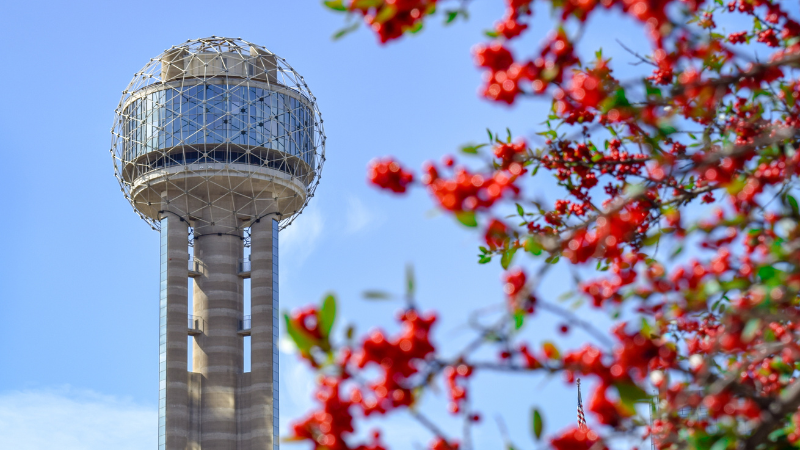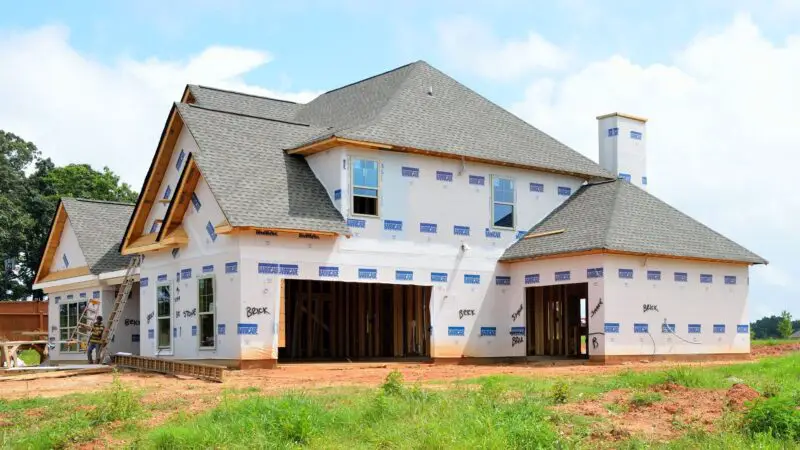Dallas is located in North Texas, in the sprawling metropolitan area of Dallas-Fort Worth. This city receives a large number of visitors every year, and if you are considering a trip there, you may wonder whether it has four seasons.
As a whole, Dallas does have four seasons. The subtropical climate in the area allows for mild winters, hot summers, and transitional periods in fall and spring. While it does have four seasons, it may not have the same characteristics as those in other areas.
Dallas is a great city to visit, and you will want to come prepared with the correct attire for the weather. If you are interested in a trip to Dallas, read below to find out more about the seasons and the general climate in the area.
Four Seasons in Dallas
Dallas is a cosmopolitan city full of diversity, excellent shopping opportunities, and a vibrant nightlife. The arts and culture scene is thriving, and many visitors are drawn to this location. Before arriving, you may think that Dallas is warm year-round, but seasons do change.
Dallas can be found along the Trinity River in the northern part of the state. This area enjoys a humid subtropical climate, thanks to its location in the southern plains of the country. The climate grants it very hot summers, along with mild but colder winters. To enjoy Dallas year-round, you’ll need bathing suits and winter coats!
With fall and spring acting as transitional seasons between the main two ones with differences in temperature, Dallas has four seasons in total. This variety in seasons makes it a pleasant place to live in or visit throughout the year.
What Is the Climate in Dallas?
The climate in Dallas is a humid subtropical one that is typical for the area. This climate has hot and humid summers, along with winters that can feel chilly but are usually mild. In humid subtropical areas, summers are known for being long and intense, while winters do not usually bring freezing temperatures.
The Dallas climate is heavily influenced by El Niño’s Southern Oscillation, which has a marked effect on the city’s winter and spring. While El Niño is active, it brings a warm phase with colder springs and winters, including more snow.
When the cool phase, La Niña, is active, the winter and spring seasons are warmer, and snowfall is less likely to occur. The coldest month in Dallas tends to be January, with average temperatures between 37ºF and 57ºF, while the hottest months tend to be July and August, with temperatures between 77ºF and 96ºF.
What Are the Seasons Like in Dallas?
With Dallas having four seasons, there can be quite a variation in temperatures between winter and summer, especially. Let’s take a look at what you can expect from the different seasons in Dallas.
Winter
The winter months in Dallas can be felt from December to March. This can be influenced by the air coming in from the south and bringing unseasonal warm and humid air. Snowfall is rare, but you have a higher chance of experiencing it in February.
The average snowfall in Dallas is 2.6 inches per year, but this figure can change depending on how warm each particular winter gets. The average temperatures during winter in Dallas are between 57ºF and 76.7ºF in highs and between 37ºF and 49ºF in lows.
Spring
Spring is one of the transitional seasons in Dallas. It brings an abundance of flowers across the entire metropolitan area and tends to have pleasant temperatures. This season can also experience some extreme weather, but it can be a lovely time to visit.
Storms are very likely during this season, so be sure to check the weather forecast for when you are there to know what to expect.
Summer
Dallas summers are quite memorable due to the high humidity making the temperatures feel even hotter. Extreme heat waves are common, and temperatures average between highs of 77.9ºF and lows of 58.1ºF.
The humidity has a big impact on the comfort level during the summer months. This is largely due to the collision of dry and hot winds blowing in from northern and western Texas and the humid hot air coming from the Gulf of Mexico.
Autumn
Autumn, the other transitional season in Dallas, is a very pleasant time of year with mild temperatures. Storms are rare, which makes it even easier to enjoy the city between October and December.
Is There Extreme Weather in Dallas?
Extreme weather does occur in Dallas. The city is situated at the very end of Tornado Alley, so tornadoes are not as frequent as in other locations, but they do tend to occur every year. Flooding can also happen in the area thanks to the city’s proximity to the Trinity River.
The storms and rainfall in spring are the most likely causes of floods throughout the year, but tornadoes are far more common.
Conclusion
Dallas does have four seasons, from hot and humid summers to chilly but mild winters, along with pleasant autumns and storm-filled springs. This variation in seasons can bring about some extreme weather, but overall makes Dallas a balanced place to live in and visit.






